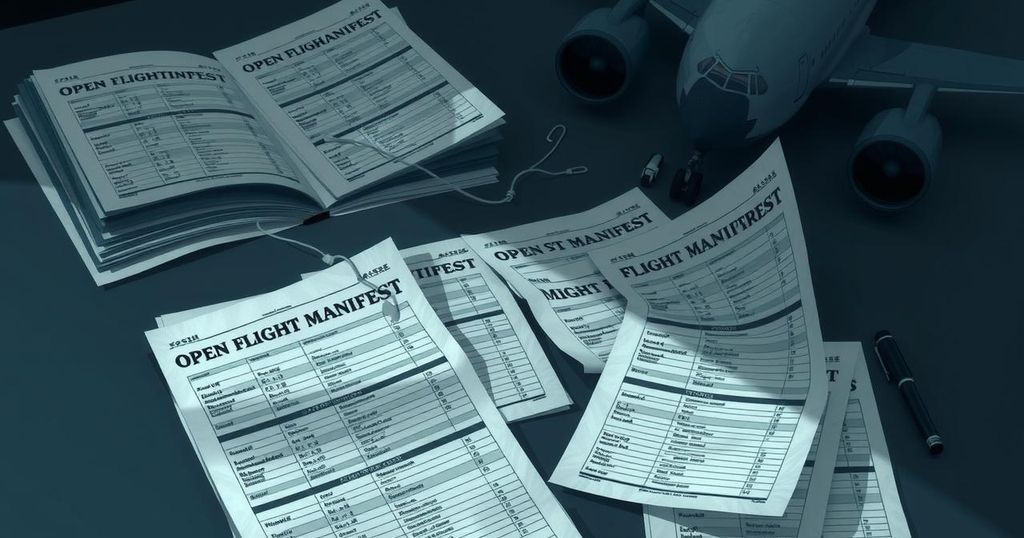Cuba Sees Increase in Traffic Fatalities Despite Fewer Accidents in Early 2025
In the first quarter of 2025, Cuba reported a decrease in traffic accidents but a concerning increase in fatalities, rising from 146 to 173. The Minister of Transport, Eduardo Rodríguez Dávila, shared the data, highlighting significant provincial variations and attributing human factors alongside structural issues as causes. Despite efforts to improve safety, the challenges persist, necessitating comprehensive strategies to address the increasing road safety crisis.
Traffic incidents in Cuba saw a noteworthy pattern in the first quarter of 2025, as announced by Minister of Transport Eduardo Rodríguez Dávila. While there was a decline in the overall number of accidents, fatalities climbed, creating a paradoxical situation that has raised concerns. Data shared on the Minister’s official Facebook account detailed that, between January and March, there were 1,738 recorded accidents—a reduction of 144 from the same quarter in 2024. Injuries also saw a decrease, with 1,514 injured, down by 87 from last year.
However, in a troubling twist, fatalities increased from 146 to 173, marking a rise of 27 deaths. Rodríguez pointed out that March specifically highlighted this uptick in fatalities. The report revealed significant disparities across regions, where the most pronounced increases in accidents were in provinces such as Villa Clara, Cienfuegos, Granma, Sancti Spíritus, and Las Tunas. Contributions to increased fatalities were notably seen in Havana, Ciego de Ávila, Camagüey, among others, with the highest rates emerging from the initial three mentioned.
Moreover, the number of injured individuals rose, particularly in provinces like Cienfuegos, Sancti Spíritus, and Ciego de Ávila. Addressing the gravity of these statistics, Minister Rodríguez emphasized that the information could lead to improved prevention measures, acknowledging that, “anything we do in that regard is insufficient, as a family never remains the same after losing one of its members in an accident that could have been prevented.”
Despite various control measures being implemented, road safety continues to be a significant challenge in Cuba. Human negligence remains at the forefront of the government’s focus, notably sidestepping deeper structural issues like deteriorating roads, inadequate signage, and the crisis of public transport that forces individuals to use dangerous alternatives. In January, the government classified drivers as the chief contributors to traffic incidents, attributing many crashes to negligence and violations of traffic laws.
According to a report from the General Directorate of the National Revolutionary Police (PNR), the lack of attention towards vehicle maintenance along with overspeeding and disrespecting right of way topped the list of causes for accidents. Alcohol consumption has also been noted as a frequent contributor, with calls for reinforced enforcement of mandatory breaks for professional drivers and improved maintenance of roads and signage at perilous spots.
Adding to the problem is the large number of aged vehicles still operational on Cuba’s roads. In acknowledgment of these mounting issues, the government revealed that approximately 75% of roads are classified as poor or merely acceptable, which exacerbates the overall safety risks. The most affected areas include municipal roads and paths, especially those in hard-to-reach locations, such as under the Turquino Plan. Repairs in these areas demand mechanized efforts that are hampered by a lack of equipment and necessary funding.
Minister Rodríguez had previously highlighted economic constraints impacting repair capabilities while also pointing fingers at mismanagement of funds intended for road rehabilitation. The government has initiated a new work system aimed at addressing these grievances. This system includes potential restructuring of management boards and financial approaches to better allocate funds, including partnerships with universities to foster better maintenance practices.
In summary, the increase in both accidents and fatalities in Cuba during the first quarter of 2025 presents a complex challenge for authorities. Despite reductions in the total number of incidents, the rise in fatalities highlights serious underlying issues that necessitate immediate and focused attention. The government appears to be aware of structural problems and is attempting to navigate through them, but real change will demand substantial efforts and resources.
Focused efforts on education, enforcement, and infrastructure will be essential if the country hopes to improve road safety and reduce the tragic toll of fatalities associated with traffic accidents. The persistent intersection of human factors, road conditions, and vehicle maintenance presents a multi-faceted crisis that demands comprehensive solutions.
In conclusion, the rise in traffic fatalities in Cuba during the first quarter of 2025, despite a decrease in accidents, underscores troubling trends related to road safety. The government acknowledges the role of human factors while simultaneously confronting broader structural issues like road deterioration, inadequate signage, and vehicle maintenance. Increased efforts, both in management and infrastructure, will be essential to curbing this growing crisis and enhancing the safety of Cuban roads. Authorities must enact multifaceted strategies to truly turn around this alarming situation, ensuring that families do not suffer the loss of loved ones due to preventable accidents.
Original Source: en.cibercuba.com




Post Comment